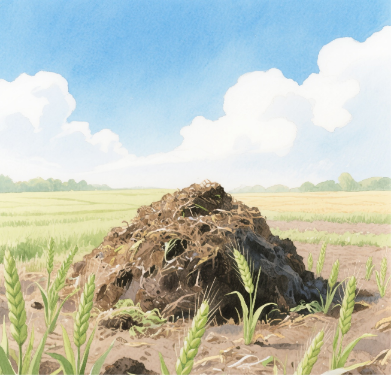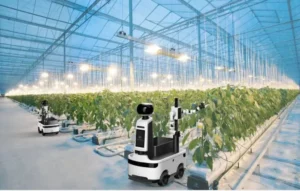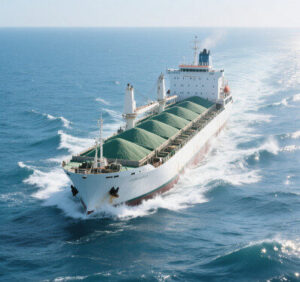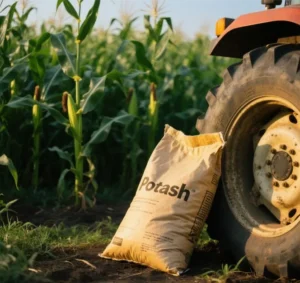In sustainable agriculture, composting organic waste into fertilizer is a key practice that harnesses the power of nature. This intricate, microbial-driven process involves a series of controlled biochemical transformations that result in stable, nutrient-rich humus. Join us as we explore the science behind organic fertilizer composting, examining its phases, microbial dynamics, and critical parameters that ensure the production of high-quality compost.
The Microbial Symphony of Composting
At the heart of composting is a complex microbial community—a diverse ensemble of bacteria, actinomycetes, and fungi—that orchestrates the decomposition of organic materials. This microbial symphony unfolds through two primary biochemical pathways: mineralization and humification. Mineralization is the catabolic breakdown of complex organic compounds that releases essential nutrients, such as carbon dioxide (CO₂), water (H₂O), ammonium (NH₄⁺), and phosphate (PO₄³⁻), into the environment. Conversely, humification involves the anabolic synthesis of stable aromatic polymers known as humic substances, which contribute to the formation of nutrient-rich humus.
The Thermal Phases and Microbial Succession
The composting process unfolds in distinct thermal phases, each of which is characterized by specific microbial activities and biochemical transformations.
- Mesophilic Phase (20-40°C): This initial stage is dominated by mesophilic bacteria and fungi, such as Bacillus and Aspergillus, which rapidly break down easily accessible sugars and starches. The pH level decreases due to the accumulation of organic acids, creating an acidic environment that accelerates the breakdown of complex organic materials.
- Thermophilic Phase (50-70°C): As microbial activity intensifies, the temperature rises, favoring thermotolerant species such as *Thermus* and *Geobacillus*. This phase is crucial for pathogen inactivation, achieving a 99% reduction in pathogens within three days at 55°C. Additionally, weed seeds lose viability, ensuring the compost is free from unwanted plant species.
- Cooling Phase (40-50°C): As the temperature decreases, the diversity of microbes shifts. Fungi experience a resurgence, and nitrifiers begin to recover. This phase marks the transition from active decomposition to the maturation of the compost.
- Maturation Phase (Ambient Temperature): During this final stage, humification processes dominate, leading to the formation of stable humic substances. The compost’s cation exchange capacity (CEC) increases, indicating its enhanced ability to retain nutrients. A germination index above 80% indicates that the compost is mature and safe for use with plants.
Biochemical Transformations: From Waste to Nutrients
Mineralization pathways in composting involve the enzymatic degradation of carbon-based compounds, such as polysaccharides and lignin, into simpler molecules. For example, cellulose and hemicellulose break down into glucose, which enters the TCA cycle to produce energy. Bacteria and fungi, such as Actinomycetes and Basidiomycetes, often facilitate this process by secreting enzymes that break down complex organic matter. Nitrogenous compounds, such as proteins, undergo ammonification, releasing ammonium. This ammonium can then be converted into nitrate through nitrification processes. Nitrifying bacteria, such as Nitrosomonas and Nitrobacter, play a crucial role in these conversions by transforming ammonium into nitrite and then nitrate, making them available for plant uptake.
Humification mechanisms, on the other hand, involve synthesizing complex aromatic polymers from lignin, microbial proteins, and phenolic compounds. These processes are facilitated by enzymes such as laccase and peroxidase and contribute to the formation of humic and fulvic acids, which enhance soil structure and fertility.
Optimizing Composting Parameters
Achieving high-quality compost requires precise control over several key parameters:
- Oxygen Dynamics: Maintaining oxygen levels above 5% is essential for supporting aerobic microbial activity and preventing the formation of anaerobic pockets, which can result in the production of undesirable compounds such as methane. Regularly turning the compost pile ensures adequate aeration. For best results, turn the pile every two to three weeks to ensure even oxygen distribution.
- Moisture Regulation: The ideal moisture content is 50-60%, which balances microbial activity and prevents the formation of anaerobic conditions. Excessive moisture can lead to oxygen depletion, while insufficient moisture can inhibit microbial growth. Check the compost periodically to achieve the right moisture balance. Add water if it feels too dry or mix in dry materials if it is too wet.
- C/N Ratio Management: An initial C/N ratio of 25-30:1 is optimal for efficient decomposition. Ratios lower than 20:1 can result in nitrogen loss through ammonia volatilization, and ratios higher than 40:1 slow down decomposition. Maintain the optimal C/N ratio by combining materials such as grass clippings (high in nitrogen) with leaves or straw (high in carbon) in equal volumes.
Following these guidelines and actively managing the composting process will allow you to create rich, high-quality compost for your garden.
Advanced Composting Technologies and Quality Assessment
Innovative approaches, such as the use of microbial inoculants and vermicomposting, enhance the composting process by accelerating degradation and improving nutrient availability. Real-time monitoring systems offer valuable insights into temperature, oxygen levels, and moisture content, allowing for precise control over the composting environment.
Quality assessment protocols, including stability tests, maturity indicators, and phytotoxicity assessments, ensure the final compost product meets stringent standards. A respiration rate below 1 mg CO₂-C/g OM/day and a germination index above 80% indicate that the compost is mature and safe for agricultural use.
The 60-Day Imperative: Time for Maturation
Compost requires a minimum of 45–60 days to fully mature, a period that allows for thorough lignocellulose degradation, humic acid polymerization, and the elimination of phytotoxic compounds. Although advanced composting systems can accelerate the process to 30–35 days, traditional windrow methods require the full 60 days to achieve optimal product characteristics.
Future Trends in Organic Fertilizer Composting: Innovation and Sustainability
As the demand for sustainable agriculture and waste management solutions grows globally, several transformative trends are poised to evolve in the field of organic fertilizer composting
1. Smart Composting Systems and Digitalization
- Integration of the Internet of Things (IoT) and artificial intelligence (AI) will optimize composting parameters in real time. Automated systems can monitor temperature, oxygen levels, moisture, and microbial activity, adjusting conditions to maximize efficiency and reduce labor costs. For instance, San Francisco implemented a smart composting system that reduced its overall waste by 20% through precise monitoring and adjustments.
- Blockchain technology can track the origin, composition, and quality of compost, ensuring transparency and authenticity in the supply chain. A Danish pilot project used blockchain technology to trace organic waste from collection to composting, successfully increasing consumer trust in compost products.
2. Circular Economy Integration
- Urban organic waste, such as food scraps and garden trimmings, will be more efficiently integrated into composting infrastructure, creating a closed loop between cities and farms. Localized composting hubs could emerge, reducing transportation emissions.
- Coprocessing (co-composting): of diverse waste streams (e.g., agricultural residues and sewage sludge) will optimize nutrient ratios and create value-added products.
3. Microbial Engineering and Biotechnology
- Genetically engineered microbial consortia could accelerate the degradation of recalcitrant materials (e.g., lignin) or enhance nutrient retention in compost.
- Metagenomic studies will reveal new microbial strains that specialize in specific composting tasks, thereby improving process efficiency and product quality.
4. Policy and Certification Expansion
- Stricter regulations and incentives, such as carbon credits and subsidies, will promote composting as a climate change mitigation strategy. Compost use in agriculture may become mandatory to reduce reliance on chemical fertilizers.
- International certification standards (e.g., EPA Class A, EU Organic Fertilizer Regulations) will evolve to include environmental impact, traceability, and soil health criteria
- Carbon Footprint Reduction and Climate Mitigation
- Composting technologies will focus on minimizing greenhouse gas emissions by capturing and utilizing methane. Methane recovery systems could convert emissions into biogas, which could offset energy costs.
- Research will quantify the long-term carbon sequestration potential of compost in soils, establishing it as a nature-based climate solution.
6. Market Expansion and Consumer Awareness
Specialized compost products, such as biochar-amended compost and disease-suppressive blends, will cater to niche markets like organic farming and urban gardening.
Education campaigns and certifications, such as the “Climate-Friendly Compost” program, will boost consumer trust and adoption rates.
Conclusion
Organic fertilizer composting is a sophisticated biological process that transforms organic waste into a nutrient-rich soil amendment. Understanding and optimizing the microbial dynamics, thermal phases, and critical parameters ensures the production of high-quality compost and contributes to sustainable agricultural practices and environmental stewardship. Looking ahead, technological, policy, and microbial engineering advancements will accelerate composting’s role in circular economies, climate resilience, and global food security. As innovation continues to shape this field, composting will become an even more efficient and scalable tool for a sustainable future.









